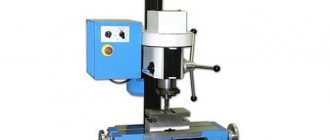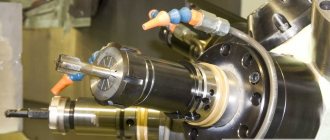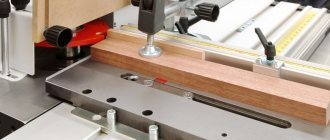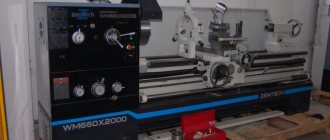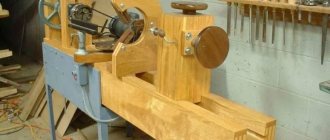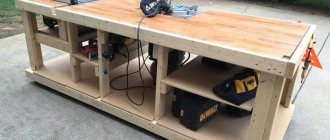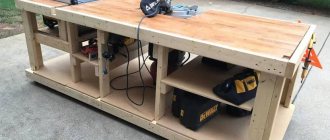In order to produce metal parts, you will need special equipment - a milling machine. The basis of its mechanism is a milling cutter - a gear wheel with blades. During the machining process, it rotates at high speed and cuts into the workpiece being processed, which is located on the table top and is fed with translational movements in a rectilinear or curvilinear manner.
This invention belongs to the English engineer Eli Whitney, who lived in the 19th century. At first, the tool he created was primitive, and had to be milled by hand. But over time, milling machines have improved and made it possible to increase labor productivity. With the advent of new technologies, equipment has become adapted to software and has further simplified the work of milling operators. Today there are different types and types of milling machines for metal processing. They are used not only in industrial enterprises, but also for home use.
What are milling machines?
Milling machines are a group of equipment whose purpose is to process workpieces using a cutter. In turn, a milling cutter is understood as a tool that has several rotating cutters that are immersed in a solid material and remove a certain layer from it, making the necessary changes in the workpiece.
Milling machines can be either metal-cutting or woodworking. The models are widely used in large, medium and small enterprises. They are actively used in production shops and repair workshops. They are distinguished by high productivity and precise implementation of the tasks assigned to them.
Universal
Universal machines are used in small-scale production, small repair shops, and tool shops. The equipment is intended for the production of parts using the milling method.
The design features of this type of equipment allow the work to be carried out efficiently and quickly. The spindle and gearbox are placed inside the bed along with other elements of the machine. The console moves along vertical guides, and along the console guides a slide with a rotating device moves, on which a special table is located; it, in turn, moves in a horizontal plane at different angles relative to the spindle axis.
How do milling machines work?
When operating milling machines, a distinction is made between main and auxiliary operations. The main actions of the unit include:
- rotational movement of the cutter fixed in the spindle,
- straight or curved feeding of a workpiece fixed on the table.
The essence of this process is that, as a result of the interaction between the cutter and the workpiece during cutting, a pre-designated layer of material is removed from the product in the location exactly indicated by the technological map, which ultimately makes it possible to obtain a part with the required technical characteristics.
Moreover, when performing operations with large workpieces, the cutter can also move. And in all cases the unit can be controlled manually, automatically or using a numerical control system.
Auxiliary operations during the operation of milling machines are also very important. Their list includes the following works:
- on setting up and commissioning the device,
- on process management,
- for securing and releasing parts,
- for fixing and removing tools,
- on the approach and removal of the cutter to the machined planes,
- to control the operations performed,
- and so on.
Symbols of serially produced metal-cutting machines
In more detail - Symbols of commercially produced milling machines.
6
— milling machine (group number according to ENIMS classification)
D
– series (generation) of the machine (B, K, N, M, R, T), for example, 682, 6B82Sh, 6K82Sh, 6N82Sh, 6D81Sh, 6R82Sh, 6T82Sh
8
– subgroup number (1, 2, 3, 4, 5, 6, 7, 8, 9) according to the ENIMS classification (8 - horizontal milling)
1
– machine version – standard size (0, 1, 2, 3, 4) (1 – work table size – 250 x 1000)
Letters at the end of the model designation:
G
– horizontal cantilever milling machine with a fixed table
TO
– a machine with a copying device for processing curved surfaces
B
– a machine with increased productivity (increased range of spindle speeds, increased power of the main movement motor).
P
– increased accuracy of the machine - (n, p, v, a, s) according to GOST 8-82
Sh
– widely universal machine
F1
– a machine with a digital display device (DRO) and preset of coordinates
F2
– machine with CNC positional numerical control system
F3
– machine with contour (continuous) CNC system
F4
– multi-purpose machine with CNC contour system and tool store
Rubicon, LLC
What are milling machines used for?
Milling machines are used to process hard surfaces, most often metal or wood, and certain types of equipment can also work with metal workpieces of increased strength.
The units have proven themselves well in metalworking and woodworking enterprises. Also today, a distinction is made between professional and household milling machines.
Using milling equipment you can process:
- external and internal planes,
- flat and shaped surfaces,
- gear wheels,
- ledges and grooves,
- straight and helical grooves,
- splines on the shafts,
- and so on.
A large list of operations performed on milling machines is associated with the use of a variety of types of cutters in the process. So, the devices can work with cutters:
- cross-cutting,
- cylindrical,
- disk,
- corner,
- keyed,
- shaped,
- and others.
Also, certain models are ways to perform operations using:
- boring cutters,
- drill,
- sweeps,
- countersink,
- thread-cutting devices.
That is, modern milling machines can perform not only milling operations, but also drilling and boring operations. Multifunctional machining centers are also capable of performing turning functions, which makes them universal, allows them to perform a large list of tasks and quickly pay for themselves.
Purpose
Mostly milling machines are designed for metal processing. Various parts of various profiles and sizes, including complex ones, with straight and curved contours, are cut from blanks using mechanical processing.
In addition to mechanical processing, various metal parts are made in other ways: casting into molds, stamping on presses, punching, cutting, forging. But these methods are not always technologically possible or justified. For example, stamping, gas or laser cutting cannot create a three-dimensional part or a high-precision part.
Sometimes heat treatment (high heating) is unacceptable for an alloy, since this changes the properties of the metals. Then the only way to produce parts is mechanical processing - milling.
In addition to milling, there is another type of mechanical processing of metals - turning. The process is similar to milling, but round parts are cut with cutters. As a separate type, there are combined turning and milling machines, which perform both processing along diameters and along straight lines - grooves, recesses, channels, splines, etc.
Turning and milling machine:
Classification of milling machines
The main types of milling machines are the following models:
- Horizontal milling machines
. The units contain a horizontal spindle and a console work table. The purpose is to process small and light products. - Vertical milling machines
. The tool axis in structures runs vertically. There is a working console. Workpieces with light weight and compact dimensions are accepted for work. - Universal milling machines
. The design includes a rotary table and additional devices, which allows you to significantly expand the list of milling processes performed. - Widely versatile milling machines
. The devices are equipped with a rotating spindle head and additional devices that allow you to maximally cover the entire range of milling operations. - Cantileverless milling machines
. They are produced with a vertically moving spindle, the table movements are longitudinal and transverse, which along the trajectory resembles a cross. There is no console, the part is mounted on a rigid base. Perform work with large and heavy workpieces. - Longitudinal milling machines
. The design includes a table that makes longitudinal movement, and the movements of the spindle head are transverse, vertical or at an angle. - Rotary milling machines
. They belong to units with continuous action and operate on the principle of a multi-position process. Equipped with one or more vertical spindles.
Types and classification
The first primitive milling machines appeared in the 17th century. The prototypes of modern machines are in the 19th century. To date, dozens of varieties of such machines have been created and are in use.
Horizontal milling
Horizontal spindle position. The machines are used for shallow sampling of long parts, described above.
Vertical milling
Vertical spindle arrangement. The machines are better suited for deep sampling inside workpieces and processing of part walls, also described above.
Universal
These are machines with a cutter that moves on a support, which makes it universal for processing different parts. Can process horizontal, vertical and inclined planes of workpieces. Work with turning and drilling cutters. Modern machines of this type are CNC and operate with minimal participation of the machine operator.
Universal router:
Drilling and milling
Machines of this type are similar in design to a vertical drilling machine. There are desktop models of low power, and industrial ones for processing large parts.
Their main difference from a conventional drilling machine:
- more powerful engine;
- the presence of a work table, like a milling machine, screw feed in three planes on a slide, a vice for fastening the workpiece on the work table slide;
- powerful chuck for mounting various cutters and cutters.
It can be used as a regular drilling machine, if instead of cutters you put a drill of the required diameter in the chuck.
Widely versatile
Compared to simply universal milling cutters, they have expanded capabilities. Equipped with two spindles, horizontal and vertical. The work table not only moves left/right, back/forward and up/down, like all routers, but can tilt at the desired angle.
Such machines can perform a wide range of different operations - milling in different planes, drilling, threading, etc., which makes them highly versatile. Modern industrial models can be equipped with CNC.
Consoleless
On console machines, the work table is located on the console and is significantly raised relative to the workshop floor. This makes it difficult or impossible to process large workpieces. They either simply do not fit in the workspace under the cutter, or they weigh too much. To process such workpieces, non-cantilever machines are used.
Their work table is located much lower, right on the base of the machine, and can withstand a lot of weight.
Industrial machines of this type can process workpieces weighing several tons.
Longitudinal milling
These are powerful industrial machines designed for processing long parts. For example, the MS64OGMF4-16 K machine is capable of processing workpieces up to 17 meters long. At the same time, the workpiece has a significant height (up to 3.5 m) and width (up to 5 m). However, it is the significant length of the work table that gives such machines the name – longitudinal.
The mass of the workpiece can be over 200 tons, and it is difficult to move it relative to the cutter with high accuracy. Therefore, the machines are structurally designed as a stationary work table and milling heads that move relative to the workpiece.
At the same time, the machine makes not only longitudinal selections, but also any others according to the drawings of the future part. The video shows a demonstration of such a machine:
Copying
There are many types of milling machines that operate on the principle of mechanical copying, that is, using templates. CNC machines can also copy blanks, that is, make many parts of the same size. But we are talking about mechanical, not digital copying.
In metalworking, this principle is practically not used, since metal is a hard material and it is problematic to determine the precise movement of a cutter or workpiece using a template.
Copying machines are used mainly in woodworking. As an example, in the video there is a demonstration of a WoodTec copy-milling machine:
Keyed
These are specialized machines designed for selecting keyways in shafts.
There are both the simplest small models and powerful industrial machines with two spindles for simultaneous cutting of two grooves at the ends of the shaft, hydraulic feed of the workpiece.
When working, a measuring tool is practically not used, since the width of the groove is set by the diameter of the cutter. Although there are machines with eccentric rotation of the cutter, when it selects a groove wider than its diameter, the width of the groove is known in advance.
Only the length and depth of the keyway are controlled. Keyways and keys for them come in different sizes and shapes. As an example, a classic connection with a closed (blind) groove that does not extend to the end of the shaft and a groove on the gear:
Keyways are also selected in other ways on different machines. We are talking about specialized ones, created specifically for such operations in large production lines.
Tabletop
Benchtop milling machines work on the same principle as all others. The difference is in small dimensions and weight.
These can be horizontal, vertical or drilling and milling machines. Engine power, from 0.75 kW to 1.5 kW. As an example, NGF 110 (desktop horizontal router).
Models of machines NGF 110 Sh3, NGF 110 Sh4 could be found in many schools. They were used for labor training. The letter Ш in the marking of the machine means “school”.
The machine has 6 spindle speed modes and a 0.75 kW motor.
Despite its small dimensions, power and educational focus, the NGF 110 is a fully functional machine that copes well with processing small parts. Accuracy class – N (normal).
Tabletop machines also include modern small milling and turning machines. An example of such a machine in the photo:
The machine has a 300 W motor and is designed for the manufacture of small products with complex profiles from soft materials.
CNC
Punched cards and punched tape were used to program the first CNC machines.
The first domestic 6N13 CNC milling machines appeared in the mid-60s. The machines were controlled by the Kontur-ZP system. With the advent of modern computers, the capabilities of such machines have become an order of magnitude higher.
Today there are fully robotic complexes that, according to a given program, without the participation of a machine operator, can create any part of the most complex shape with high precision. They are controlled using the following chain:
- Microcontroller or microprocessor.
- Controller with programming capability (logic).
- Control computer.
All the data about the parameters of the required part are stored in the control computer program, and then the machine does everything itself. The operator's actions are as follows:
- Loading data into the machine computer.
- Correct positioning of the workpiece.
- Process control.
On fully robotic lines, the workpiece is moved without operator intervention along a conveyor and manipulators, and the program can be created remotely via an industrial network.
There are 3, 4, 5 and 6 axis CNC milling machines, 6 axis are the most complex and expensive, and are less common. The number of axes of movement of the cutter determines how complex a part can be processed at one time, without changing the position of the workpiece or using another machine.
Another model line is medium and small CNC machines, including tabletop ones. They can be placed in a small carpentry or home workshop.
As an example, an average CNC milling machine for making wooden balusters in the video:
Using milling machines
When performing operations on milling machines, the following equipment parameters are fundamental:
- Spindle position
. The spindle can move vertically, horizontally or at an angle to the product. - Number of spindle heads
. The design of the machine may include one, two or more spindle heads, as well as an additional removable head. - Desktop design
. Directly affects the movements of the table: whether it will move longitudinally or transversely, whether it will rise and fall, and also turn in different directions. - Number of axes
. There can be from 2 to 5 axes in machines. They determine the capabilities of a complex configuration of surface treatment of parts, as well as the performance of the unit. - Processing precision
. Operations can be performed with normal, high or increased precision. - Using various cutting tools
. On some units, only a small number of different cutters can be used, and certain machines allow the use of several dozen cutting tools. - Unit power
. Power directly affects the selection of workpieces with the appropriate level of hardness, determination of work speed and cutting depth. - Spindle speed
. Allows you to determine the types of materials allowed for work, as well as the quality of surface treatment. - Dimensions of the working area
. They determine the permissible dimensions of products accepted for processing.
The working process
Milling technology is one of the most complex among other types of metalworking. During operation, the cutter must be moved in different directions, according to certain patterns.
The quality of the product is affected by its rotation speed and changes in cutting parameters. The milling process is cyclical - the load alternates with a subsequent pause. Depending on the types of milling operations, appropriate equipment is selected.
All machines have the same operating principle, but differ in additional elements and functionality. For example, some models have an additional slotting head, dividing apparatus and comb cutting device.
The main structure consists of a supporting frame, a work table, a moving spindle with a slide and a collet with a chuck into which the cutter is fixed. It comes in different shapes and sizes, depending on what part needs to be processed.
Equipment may have different controls:
- manual;
- automated;
- using a computer system.
The simplest configurations are manual machines.
Manual metal milling machine
They have a low electric motor power, which allows them to perform simple milling operations. These models are suitable for occasional use. Of particular interest in production are powerful machines equipped with different parts and capable of performing more complex tasks.

